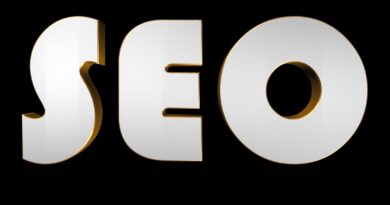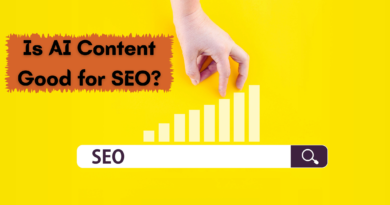5 Effective Tips To Improve Your SEO Friendly Website Design
If you want your business’ website to do well, you have to ensure that it gets adequately engaged by audiences. But for your target audience to engage with your website, you have to get them there first. How do you do that? The answer lies in search engine optimization (SEO), a process that aims to increase websites’ rankings on search engines.
People use Google, Yahoo, Bing, and other search engines to look for solutions to their problems. The search engines present the potential solutions to their problems in the form of search engine result pages (SERP‘s). The web pages in the SERPs appear on the basis of how well optimized they are in relation to users’ respective search queries.
Quite simply, you must optimize your website and its pages for search engines. Without optimization, the website simply won’t generate enough website traffic, which can damage your business prospects in the long run. So, how do you design an SEO-friendly website?
Read on to find out 5 of the most effective ways which are commonly employed by SEO companies in New Jersey. These ways aren’t complicated but do require you to put in some thought and effort.
1. Meta description optimization for boosting clicks.
On a SERP, a web page’s meta description tells users what the page is about – like a summary. It’s a vital HTML element that plays an important role in search marketing. By going through a meta description, users can find out whether a particular web page has the potential to solve their problems.
Optimizing meta descriptions is of huge significance, as minus optimization, it can be hard for users to understand what your web page contains. The modern-day internet user is also notorious for lacking patience. So, if your pages’ meta descriptions don’t accurately reflect the content inside them, you can’t expect users to visit your website.
To optimize your pages’ meta descriptions properly, you need to focus on two things – relevance and length. The meta descriptions should be relevant to the content of the web pages, and their length shouldn’t exceed 150 characters (including space).
2. Image optimization for faster page load times.
Images are visual elements that can make your web pages more eye-catching and attractive. So, you should ideally include high-quality images across all your web pages. However, there can be a downside to high-quality images – they may drastically slow down the load times of your web pages. Quite simply, the greater the size of an image, the more time the page will take to load.
That’s why any reputed digital marketing agency in NJ will turn to image compression, which is a process for lowering the size of the images. Sure, compression definitely takes a toll on the picture quality, but maintaining a balance between quality and load time is important.
With compressed images, your web pages will load faster, which will help you retain members of your target audience. Nowadays, no internet user has the patience to wait for long periods so the images on a web page can load. If the load times are so long that they frustrate users, very few will visit your website; most importantly, stay on it.
3. Website content creation for targeting keywords.
So, you’ve optimized your pages’ meta descriptions and compressed the images as well. Next, it’s time for the most vital element in terms of SEO – your website’s content. The content plays a crucial role in your web page ranking on SERPs, as it contains the keywords or key phrases that your target audience will use to perform their search queries.
Your web pages need to have a combination of short-tail and long-tail keywords. Short-tail keywords are generic keywords that will attract the general audience to the website. However, for getting the most meaningful audience to visit your website, you need to focus on long-tail keywords. Let’s help you understand this through an example.
If you own a company that offers professional painting services in NJ for both commercial and residential spaces, a good short-tail keyword could go something like – professional painters. However, a quality long-tail keyword could be – residential painters in NJ. The long-tail keyword is more valuable as it mentions some of the most relevant aspects of your business, i.e., what you do, your specialty (in this case, residential), and where you do it.
While incorporating keywords, it’s important to remember that the content shouldn’t be stuffed full of keywords. Gone are the days when keyword stuffing would lead to a higher Google ranking.
You should include the keywords as naturally as possible, and they should be spaced out across your content. To find the most relevant keywords for your business and its services, you should use a keyword research tool.
4. Internal linking for search engines to index and crawl pages.
Google relies on processes known as crawling and indexing to find relevant pages based on a user’s search terms. However, these processes are tricky, and they require websites to be designed in such a way that facilitates these processes. Simply put, your web pages should make it easy for Google to index and crawl information about them.
One of the best ways to do this is internal linking, i.e., linking different web pages on your website with each other. An internally-linked website allows Google to index and crawl more information efficiently, which dramatically increases the chances of high rankings on SERPs.
For example, the homepage of your website could be linked to the about us page and vice versa. Your home page could also feature internal links to the service pages. It’s completely up to you as to how you do it. However, when building internal links, make sure that the links are relevant. This will give your website the best chance to rank high on Google SERPs through internal linking.
5. Header tag optimization for greater search engine understanding.
Website content is typically broken down into multiple sections, and each section features a heading at its beginning. These headings are known as header tags, and optimizing them is also vital for designing SEO-friendly pages.
The reason for this is simple – context. In recent years, Google hasn’t just been indexing and crawling website information and focusing on the inclusion of keywords. It’s also looking for context, and by optimizing the header tags, you can provide that much-needed context about your web pages to the search engine.
You should also aim to incorporate your main keywords across the headers naturally. Many websites have been successful at optimizing their header tags by including secondary keywords. Optimized header tags also play a key role in readability, which refers to how ‘readable’ your content is. Readable content refers to content that’s broken down into smaller sections, which allow users to digest the presented information without feeling overwhelmed by large chunks of text.
Conclusion
While these aren’t the only ways to design a website that’s SEO-friendly, they’re certainly the most important ones that will get you the desired results. Last but not least, it’s important for any web design agency in NJ to stay up-to-date with the latest trends being used by the SEO companies in New Jersey. SEO is a dynamic sector, and consistent changes to Google’s algorithm require the professionals to be at the top of their game for designing and developing websites that succeed.
Read: Advanced SEO Handpicks




